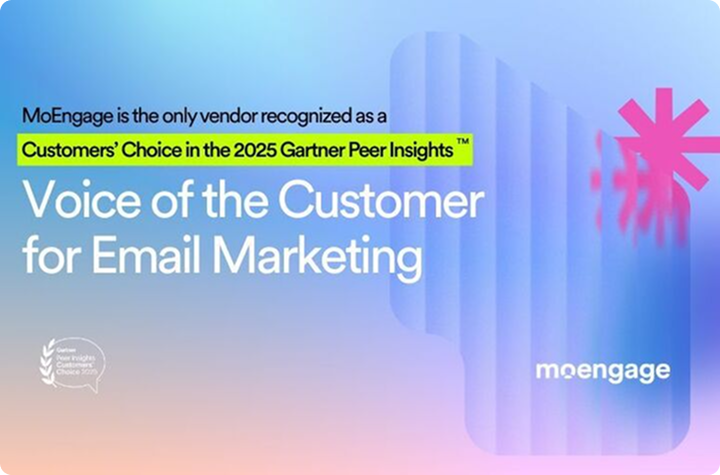Top E-commerce Marketing Strategy Fails and How to Avoid Them

Reading Time: 6 minutes
Competition in the e-commerce sector is intense. Therefore, to get the upper hand over your competition, a strong marketing strategy is essential. Creating a strong multichannel strategy for marketing that will balance your business goals with your resources can be challenging to achieve but highly beneficial if successful.
Over the last 20 years, countless e-commerce businesses have launched; some have prospered, and others have failed. Here are some common marketing strategy mistakes that hold back growth and ultimately lead to business failure.
1. Using The Wrong E-Commerce Platform
The right e-commerce platform could be the single most important factor in determining your business’s success. In a nutshell, e-commerce platforms are website builders that are specifically designed to help you sell products on your domain. The way a customer feels while browsing around your e-store largely depends on how your website feels, which means even the smallest of features would come into play (color scheme, user interface, responsiveness, etc.)
That’s why it is critical to be updated with the latest e-commerce platform trends.
Here are some of the most popular e-commerce platforms and how to know if they are right for your business:
- Shopify has some great sales-specific features, so it is great if you want to take conversions and sales to the next level.
- Wix offers probably the best value for money, so it is good for businesses that are just starting out or on a budget.
- BigCommerce has excellent multichannel selling capability.
- Volusion has a huge array of features, making it perfect for businesses that are scaling.
- Squarespace offers a high degree of creative control, making it ideal for those who have some tech knowledge and want to stand out from the competition.
In today’s digital age, experiments are integral to the growth of any e-commerce brand. Here’s Chiragh Kirpalani, founder of Ayopop, and Chen Chow Yeoh, co-founder of Fave, sharing insights on the need for experimentation and getting it right for your brand.
2. Not Having Goals or A Roadmap
Astonishingly, almost 50% of businesses report having no formal digital marketing strategy, although they are still carrying out digital marketing. This does make sense, however, when you consider that research also shows 44% of businesses had no overall marketing strategy. After all, if there is no overall strategy to bring the digital marketing plan into line with, creating a digital marketing strategy is pretty difficult!
This is a huge mistake, however, because no great business will be successful in marketing without a strategy, let alone an e-commerce business. Not only because it will come across unforeseen obstacles but also because, in the current digital age, everything is seemingly updating every second. Not checking E-commerce marketing stats every once in a while will result in a wrong assessment of the current situation, affecting your business.
Therefore, make sure you have a plan to go by. In fact, make sure to have not only a plan A but plans B-Z in place so that for every failed or inefficient plan, there will be another tactic ready to deal with the ever-changing landscape you are working in. This article has a great step-by-step guide to creating a marketing strategy for your business, whether in the e-commerce niche or another industry.
Bonus Content
|
3. Having No Content Marketing Plan
Content is one of the most essential parts of any e-commerce marketing strategy. You can upload consumer goods or products like custom portraits or other types of artwork without descriptions, reviews, or any content that will possibly attract customers. Content is that one hook that gets the fish for sure. Having no content means failure is almost guaranteed.
Content marketing, when done well, can build your brand’s image, develop your customer base, establish credibility, and create trust. All of this translates into more sales, more revenue, and ultimately business success. If you’d like some inspiration from brands who do this well, check out Best Buy’s informative PC buying guide or ModCloth’s stunning online galleries.
4. Not Knowing Your Customers
Not researching your customers is a big mistake for e-commerce businesses. Just like any other person in the market who wishes to sell something, you also need to research the needs and requirements of your customers. Why do you think anyone uses anything at all? Well, sometimes there is a need, and other times the need is created. Therefore, research is the key. A solid understanding of your customer base means you can tailor your content in a way that is relevant to your audience.
Not sure who your customer is? Start by asking these questions:
1) What does your product do for your customer? What problem does it solve for them?
2) Who has this problem? What is their gender, age, education, business, or occupation? What are their work and personal situations? Where are they geographically located?
3) What specific benefits is this person looking for?
4) When, how, and where does this person go when they are looking to buy this kind of product or service?
5. Unclear Value Proposition
Research shows that, on average, a visitor will spend only 0.2 seconds on your site before making the decision to close the site or explore further. How do you convince them to stay for such a short timeframe? Your value proposition is key. This is your commitment and a promise to deliver something that will meet a need they have; essentially, it is the reason someone would purchase your product or service. If you fail to effectively, clearly, and quickly present your value proposition, your visitors are likely to look elsewhere.
6. Are you following the 70-20-10 rule for your digital media investments?
E-commerce is dynamic, and things are changing all the time. New ways of promoting your business develop and evolve constantly, so it is important to keep on top of these changes. Being too rigid and not investing in the correct channels, namely those that represent the most value for your business, can be a critical mistake.
Avoid this by following the 70:20:10 rule, which is:
– Be guided in 70% of your decision based on your own knowledge and experience; and
– 20% from interactions with other members of your team
– 10% from formal training and learning
7. Not Conducting SEO Competitor Analysis
These days, most companies understand the importance of SEO, but many overlook SEO competitor analysis. Identifying your key SEO competitors and learning from their wins and failures can allow you to take your SEO to the next level, exponentially increasing the volume of traffic to your site.
Here is a basic overview of how to conduct an SEO competitor analysis:
1) Identify your top SEO competitors, remembering that they may be different from your top business competitors. An easy way to do this is to do a few Google searches for the main keywords relating to your products and services and see which sites rank highest.
2) Analyze these sites on a tool like Ahrefs to see which keywords they are ranking for.
3) Research your top competitors’ backlink profiles, content, and traffic composition. You can also capture website screenshots to see what your competition is up to.
4) Use this information to refine your own SEO strategy for B2B or B2C.
8. Lack of Retargeting to Bring Customers Back to Your Website or App
Even if you are doing everything right, a certain percentage of visitors will always leave the site without making a purchase. This can be due to any kind of reason, many of which are completely external to you and beyond your control. However, just because they leave doesn’t mean they’re lost to you forever.
Retargeting can help you bring back these lost potential customers and open up a huge number of potential sales that you would otherwise lose. This article has some great tips for retargeting customers and securing repeat business. Try sending emails or reminders to check up on potential customers. Your ads can still pop up on their Instagram and Facebook to remind them to go back.
Conclusion
In essence, there is more to having a successful e-commerce business than simply building a website. Large companies like Shopify and BigCommerce have dramatically condensed the cost of launching an e-commerce site. Therefore, sourcing products to sell on these sites has also become ultimately cheaper.
This has drawn many people into the belief that if they just set up and make an online shop, people will simply show up. However, that doesn’t just happen.
E-commerce businesses need to work hard to attract customers.
It is recommended that companies establish a social presence, publish and develop content, and eventually invest in paid media on social channels to make the most of their e-commerce marketing, build their customer base, increase sales, and ultimately grow their business exponentially.
| Here’s What You Can Read Next |















